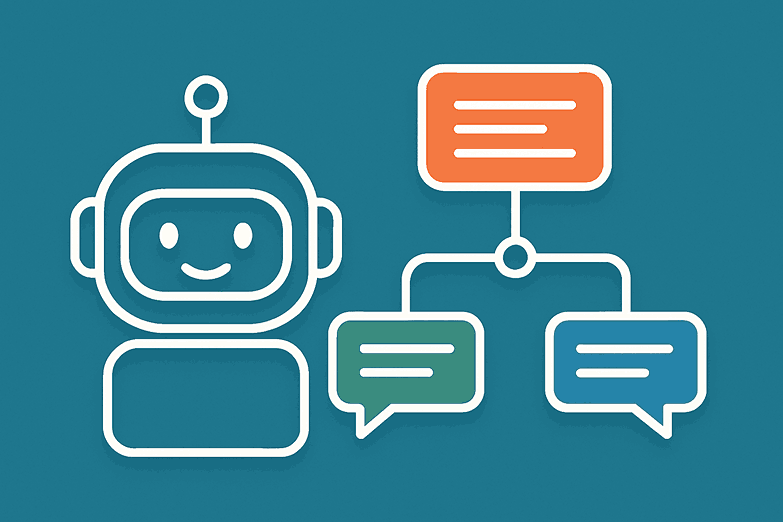The ability to steer and shape dialogues dynamically is revolutionizing how we interact with AI. ChatGPT branching conversations let users craft rich, multi-path dialogues—enabling personalized experiences, deep explorations, and complex workflows. This guide delves into everything you need to harness branching interactions: concepts, real-world examples, best practices, advanced techniques, and pitfalls to avoid.
Table of Contents
- Introduction
- Understanding Branching Conversations
- Why Use Branching with ChatGPT?
- Real-World Applications
- Designing Effective Branches
- Technical Implementation Strategies
- Balancing Automation and Human Touch
- Common Challenges and Solutions
- Future Trends in AI Dialogue
- Conclusion
Introduction
Conversational AI has evolved from simple, linear scripts into sophisticated systems capable of context-aware exchanges. With ChatGPT branching conversations, developers, content creators, educators, and businesses can design dialogues that adapt dynamically to user inputs. Picture a “choose-your-own-adventure” narrative, where each decision point unlocks a new segment of the story tailored to the participant’s choices.
This flexibility not only provides a more engaging experience but also enables targeted guidance—whether it’s troubleshooting a technical issue, delivering personalized learning modules, or offering supportive mental health check-ins. By the end of this guide, you’ll understand how to craft branching flows that maintain coherence, cater to varied user needs, and scale across applications.
Understanding Branching Conversations
At its core, a branching conversation is structured around decision points, or “nodes,” where user responses dictate the next step in the interaction. Unlike a one-size-fits-all response, branching leverages context retention to remember prior choices, ensuring continuity across longer dialogues. For example, if a user indicates a preference for vegetarian recipes early in a cooking assistant, subsequent branches will offer meal suggestions that align with that dietary choice.
Behind the scenes, each branch may maintain its own state—tracking variables like user mood, familiarity with a topic, or feature usage history. These variables shape future prompts, making interactions feel more personalized and coherent. The art of effective branching lies in balancing the number of possible paths with clarity, so the conversation doesn’t become unwieldy or confusing.
Why Use Branching with ChatGPT?
Branching with ChatGPT delivers far-reaching benefits. Personalization transforms generic interactions into bespoke experiences, where each user feels seen and catered to. In customer support, branching enables rapid issue resolution by guiding individuals down precisely the steps they need, rather than presenting an overwhelming menu of options. For educators, branching mimics adaptive tutoring—assessing a learner’s current understanding and delivering content that builds on existing knowledge.
Beyond efficiency, branching increases engagement: people are naturally curious and more invested when they can make choices. At the organizational level, analytics collected from branching flows reveal insights into user preferences and pain points, guiding iterative improvements. As you scale branching designs, modular branches act like reusable building blocks, reducing development effort for new use cases.
Real-World Applications
In customer support scenarios, a telecom provider might begin by asking users the nature of their issue. If a subscriber selects billing, the branch can walk through invoice details, payment methods, and common billing errors in sequence. Alternatively, selecting technical troubles triggers connection diagnostics, router reset instructions, or escalation to a live technician. This tailored path not only resolves problems more efficiently but also reduces agent workload. In e-learning, an online coding platform could ask learners about their experience level.
Beginners receive foundational lessons on syntax and control flow, while seasoned coders jump straight into advanced projects, ensuring neither group feels under- or overchallenged. Retail chatbots employ branching to recommend products: someone exploring men’s footwear will see curated catalogs with filters for style and size, whereas a shopper interested in accessories might be guided toward matching items. Finally, mental health chatbots use branching to offer appropriate coping strategies—journaling prompts for introspection or guided breathing exercises for anxiety—providing compassionate support that adapts to each individual’s needs.
Designing Effective Branches
Effective branching begins with thoughtful planning. Start by mapping conversation trees visually, outlining each decision point and potential outcome. Writing clear, user-friendly prompts at each node is crucial; the language should guide without overwhelming. For instance, instead of asking, “Which module do you prefer?”, consider “Would you like to explore basic or advanced techniques next?” As branches multiply, maintain context by storing key variables—user goals, preferences, or prior responses—so later nodes can reference and build upon earlier information.
Regularly review analytics to identify dead ends or underused paths. Prune or merge branches that confuse users or fail to deliver value, keeping the conversation streamlined. Over time, you’ll develop a library of reusable modules—self-contained branches that can be combined in new configurations for different purposes, accelerating future development.
Technical Implementation Strategies
Implementing branching with ChatGPT involves a combination of prompt engineering, state management, and robust API design. Begin by crafting system messages that set roles and context, such as “You are a friendly tutor guiding a student through algebra.” When a user makes a choice, encode their selection in a JSON-based session object, for example:
json
{
“topic”: “algebra”,
“currentBranch”: “quadraticEquations”,
“progress”: [“introduction”,”practiceProblems”]
}
This structure ensures each API call includes the full conversational state. Modularize your code by creating handlers for each branch, making maintenance easier and reducing duplication. Middleware can preprocess user inputs to detect branch transitions or catch ambiguous responses, prompting clarifications when necessary. Finally, implement fallback responses for unmatched inputs—gently guiding users back to known paths without breaking the flow. Rigorous testing is critical: simulate every possible path to verify coherence and completeness, and engage real users in beta testing to uncover unexpected interactions.
Balancing Automation and Human Touch
While automation enables rapid, scalable interactions, preserving the human element fosters trust and empathy. Design your system to flag high-risk or sensitive conversations—such as those indicating severe distress—to human agents for real-time intervention. Human-in-the-loop workflows allow support teams to review AI suggestions, add personalized notes, or override branches when necessary. Transparency plays a key role: clearly inform users when they are interacting with AI, and provide easy options to escalate to human support if they prefer. By blending AI efficiency with human compassion, you create experiences that feel both seamless and genuinely caring.
Common Challenges and Solutions
Branching can lead to complexity if not managed carefully. An explosion of options at each node may overwhelm users and developers alike. The solution is to limit choices to a manageable number—typically three to five—and group similar paths where possible. Context drift occurs when the AI loses track of earlier information; addressing this involves periodic summaries of the conversation state and explicit reminders within prompts.
Ambiguous user inputs pose another hurdle. Whenever an input doesn’t match known intents, employ clarifying questions or present multiple-choice options to redirect the flow. Finally, maintaining and updating branching logic can be labor-intensive. Building a library of modular branch components reduces duplication, and adopting version control for dialogue scripts helps coordinate updates across teams.
Future Trends in AI Dialogue
The next frontier of branching conversations lies in adaptive learning loops, where AI models refine branches based on aggregated user data—automatically optimizing paths to improve engagement and outcomes. Multimodal branching will integrate voice, images, and video responses within conversational flows, offering richer experiences for users with diverse preferences. Emotion-aware routing, powered by real-time sentiment analysis, will dynamically steer dialogues toward supportive or celebratory content based on detected mood. Low-code visual editors are emerging, empowering non-technical stakeholders to build and modify branching flows without writing code, democratizing the creation of interactive AI experiences.
Conclusion
ChatGPT branching conversations open the door to highly personalized, engaging, and efficient dialogues. By thoughtfully designing branches, maintaining context, and balancing AI automation with human oversight, you can build chat experiences that resonate deeply with users across support, education, sales, and wellness. Begin with a clear conversation map, iterate based on analytics, and expand gradually—empowering your audience with interactive journeys that feel both responsive and meaningful.



